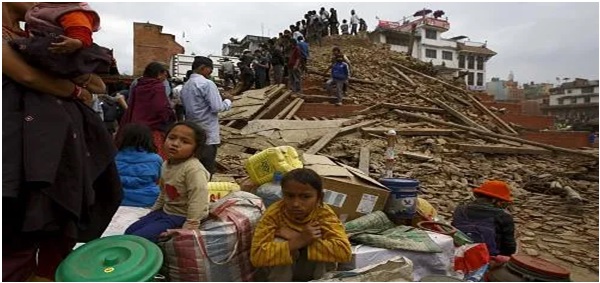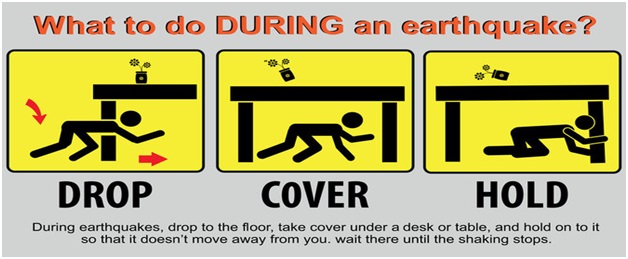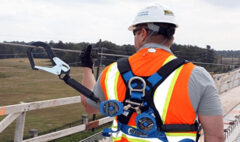Emergency Action Plans Can Be a Lifeline During Earthquake Emergencies
Emergency Action Plans Can Be a Lifeline During Earthquake Emergencies
Earthquakes are one of the most devastating natural disasters known to humanity, capable of causing widespread destruction within moments. From crumbling infrastructure to the loss of lives, the impact of earthquakes reverberates long after the ground stops shaking. To mitigate the disastrous consequences of such events, having well-thought-out Emergency Action Plans(EAPs) is paramount. The information and strategies of what an ideal Emergency Action Plan should contain can be gained through online safety training resources.
Understanding Earthquake Dynamics
Occupational safety and health training are a critical resource that organizations, individuals and communities should tap into to advance their emergency preparedness. Before delving into the importance of EAPs, it’s crucial to grasp the sheer force and frequency of earthquakes worldwide. On average, the Earth experiences about 20,000 earthquakes every year, ranging from minor tremors to catastrophic quakes. According to the United States Geological Survey (USGS), between 1970 and 2019, over 13.6 million earthquakes occurred globally. While most of these earthquakes are minor and go unnoticed, the impact of moderate to severe earthquakes can be catastrophic.
New USGS-FEMA Study Highlights Economic Earthquake Risk in the United States
Fatalities and Destruction
Many safety courses provide information about the grim consequences of earthquakes, whichoften have fatalities and widespread destruction as their common outcomes. Consider the devastating earthquake that struck Haiti in 2010, registering a magnitude of 7.0. The disaster claimed the lives of approximately 230,000 people and left over 1.5 million homeless, underscoring the catastrophic toll earthquakes can exact.

Similarly, the Tohoku earthquake that hit Japan in 2011, with a magnitude of 9.0, triggered a tsunami that caused immense devastation. The disaster resulted in over 15,000 deaths and triggered a nuclear meltdown at the Fukushima Daiichi Nuclear Power Plant, adding to the complexity of the crisis.
The Cost of Earthquake Damages
A recent study jointly conducted by the U.S. Geological Survey and FEMA reveals staggering figures, estimating annual earthquake damage costs in the United States at $14.7 billion. This represents a substantial 140 percent increase compared to the previous estimate of $6.1 billion per year from 2017. However, it’s crucial to note that the perceived increase in damage costs isn’t indicative of earthquakes becoming more perilous since 2017. Instead, this surge in estimates stems from the incorporation of the latest data, including updated USGS earthquake hazard data and significant enhancements in data regarding the number and types of buildings vulnerable to seismic risks. Additionally, the report benefited from updated census data derived from the 2020 national census and more accurate estimations of construction costs. These alarming and frightening statistics clearly highlights the need for robust emergency response training programsin organizations and communities through the world.
Kishor Jaiswal, a research structural engineer at USGS and the lead author of the report, emphasized the critical role played by USGS science on earthquake hazards and FEMA’s upgraded Hazus6.0 software in conducting this analysis. Presenting the findings at the Seismological Society of America annual meeting in Puerto Rico, Jaiswal underscored the importance of utilizing the latest scientific advancements and data sources to better understand and assess the economic impact of earthquakes. This comprehensive study sheds light on the evolving landscape of earthquake risk in the United States, emphasizing the importance of continued research and preparedness efforts to mitigate the potential devastation caused by seismic events.

Earthquake Damages Likely to Cost U.S. Billions More Per Year Than Expected
https://www.preventionweb.net/news/earthquake-damages-likely-cost-us-billions-more-year-expected
Role of Emergency Action Plans
In the face of such calamities, having well-prepared Emergency Action Plans canbe a literal lifesaver. An EAP outlines specific procedures to follow before, during, and after an earthquake, ensuring that individuals and communities are adequately equipped to handle the crisis. Here’s how EAPs can assist during earthquake emergencies:
Fortifying Communities: The Vital Role of Preparedness in Disaster Readiness
Preparedness is the cornerstone of effective disaster management in the workplace. Emergency Action Plans helps with preparedness and plays a critical role in highlighting its significance. Strategies for preparedness can be learnt through well-crafted safety and health training. By establishing clear protocols and guidelines, EAPs ensure that individuals and communities are equipped to anticipate and respond to earthquake emergencies. Through regular training drills and the creation of emergency supply kits, EAPs instill a sense of readiness among stakeholders, empowering them to act swiftly and decisively when disaster strikes. This emphasis on preparedness not only enhances the safety and resilience of individuals but also fosters a culture of proactive risk management within organizations and communities.
Furthermore, EAPs serve as invaluable tools for promoting awareness and education about earthquake preparedness. By disseminating information on safety procedures, evacuation routes, and emergency contacts, EAPs empower individuals to make informed decisions during times of crisis. This proactive approach not only reduces the likelihood of injury and loss of life but also minimizes the chaos and confusion that can ensue during emergencies. Through effective communication and outreach initiatives, EAPs foster a sense of collective responsibility, encouraging collaboration and solidarity among community members in safeguarding against the devastating impact of earthquakes.
Earthquake Preparedness in the Workplace
Occupational safety and health training arewidely used by many organizations globally to prepare workers and communities for this type of natural disaster. Ensuring earthquake preparedness in the workplace is essential for safeguarding the well-being of employees, protecting assets, and minimizing disruption to business operations. A comprehensive earthquake preparedness plan tailored to the specific needs and layout of the workplace is crucial for mitigating risks and facilitating an effective response. Here are some key considerations for earthquake preparedness in the workplace:
Emergency Action Plans: Developing and implementing an Emergency Action Plan specific to earthquake scenarios is essential. The EAP should outline evacuation procedures, designated safe zones within the building, communication protocols, and roles and responsibilities of employees during and after the event. Regular training drills and education sessions should be conducted to ensure that all employees are familiar with the plan and know how to respond effectively.
Risk Assessment: The knowledge on how to conduct risk assessments can be learnt through online safety training. Conducting a thorough risk assessment to identify potential hazards and vulnerabilities within the workplace is the first step towards preparedness. This includes evaluating building structures, contents, and surrounding infrastructure to determine areas that may be prone to damage during an earthquake.
Building Safety Measures: Implementing structural reinforcements and safety measures within the workplace can help minimize the risk of injury and damage during an earthquake. This may include securing heavy furniture and equipment, installing seismic bracing for overhead fixtures, and reinforcing building structures to withstand seismic forces.
Emergency Supplies and Equipment: Stocking emergency supplies and equipment can be critical for ensuring the safety and well-being of employees during and after an earthquake. This may include first aid kits, emergency food and water supplies, flashlights, batteries, and portable radios. Additionally, having fire extinguishers and tools for shutting off utilities can help mitigate secondary hazards such as fires and gas leaks.
Communication and Coordination: Establishing clear communication channels and protocols for disseminating information during an earthquake is essential. This may involve designating emergency contacts, implementing a system for alerting employees, and establishing procedures for reporting injuries, damages, and other critical information. Regular communication drills and updates can help ensure that everyone is informed and prepared to respond effectively.
By prioritizing earthquake preparedness through safety and health training in the workplace and implementing proactive measures, businesses can help protect their employees and assets, minimize disruption to operations, and contribute to the overall resilience of the community in the face of seismic events.

Effective Earthquake Response Strategies
The knowledge learned from emergency response training can be helpful during an earthquake, where swift and decisive action can make all the difference in determining the extent of the damage and the number of casualties. Emergency Action Plans play a pivotal role in facilitating an organized response by providing clear guidelines on how to react during the event. Through procedures such as drop, cover, and hold on, individuals can minimize the risk of injury from falling debris and structural collapses. Additionally, EAPs outline evacuation routes and designated assembly points, ensuring that people can safely evacuate buildings and gather at predetermined locations for further instructions or assistance.
Moreover, EAPs emphasize the importance of coordination and collaboration among stakeholders to optimize response efforts. By designating roles and responsibilities, EAPs ensure that emergency responders and community members work together seamlessly to address the immediate aftermath of an earthquake. This collaborative approach not only enhances the efficiency of rescue and evacuation operations but also fosters a sense of unity and solidarity among those affected by the disaster. Through swift and decisive action guided by EAPs, individuals and communities can mitigate the impact of earthquakes and expedite-the process of recovery and rebuilding.

Post-Earthquake Recovery Initiatives
In the aftermath of an earthquake, communities are left grappling with the daunting task of recovery, which encompasses rebuilding infrastructure, providing aid to survivors, and restoring essential services. Emergency Action Plans play a crucial role in guiding these recovery efforts by outlining steps for assessing damage and prioritizing resources. By establishing clear protocols for securing utilities, assessing structural integrity, and conducting damage assessments, EAPs enable communities to swiftly identify areas of need and allocate resources accordingly. Furthermore, EAPs facilitate coordination among government agencies, non-profit organizations, and community volunteers, ensuring a cohesive and efficient response to the challenges posed by the disaster.

Likewise, EAPs emphasize the importance of resilience and adaptation in the face of adversity. By incorporating lessons learned from past earthquakes and other disasters, EAPs enable communities to develop strategies for mitigating future risks and enhancing preparedness. This proactive approach to recovery not only fosters a sense of empowerment among community members but also strengthens the overall resilience of the community. Through coordinated efforts guided by EAPs, organizations and communities can overcome the challenges posed by earthquakes and emerge stronger and more resilient than before.
Enhance Earthquake Safety Through: Online Safety Training
Safety Result Professionals’ high-quality, low-cost online safety and health training offers organizations and employees a valuable opportunity to prepare for emergencies through their meticulously crafted course titled “Emergency Action Plans.” By pursuing this course, individuals can gain comprehensive insights into developing and implementing effective emergency response strategies tailored to their specific workplace environments. Covering vital topics such as risk assessment, evacuation procedures, communication protocols, and recovery efforts, this course equips participants with the knowledge and skills necessary to respond confidently and efficiently in emergency situations, ultimately fostering a safer and more resilient work environment. For more information on how Safety Result Professionals’ online safety training can benefit your organization, visit www.safetyresultpros.com.
Conclusion
Earthquakes are unpredictable forces of nature that can wreak havoc on communities in an instant. However, with a well-prepared Emergency Action Plans, individuals, organizations, and communities can mitigate the impact of these disasters and save lives. Safety courses provide essential knowledge and skills for employees, enabling them to identify potential hazards and respond effectively during emergencies. Investing in online safety and health training, can help organizations to cultivate a culture of preparedness, thereby reducing risks and ensuring a swift and coordinated response to mitigate the impact of disasters.By emphasizing preparedness, swift response, effective communication, and organized recovery efforts, EAPs serve as a lifeline during earthquake emergencies. As the frequency and intensity of earthquakes continue to pose a threat, investing in comprehensive EAPs is not just prudent but essential for safeguarding lives and minimizing the devastation wrought by these powerful natural phenomena.
Author: Dr. O’Neil G. Blake, Chief Executive Officer (CEO) of Safety Result Professionals
MS., MBA., MSc., CSP., ASP., CSHM., CSMP., MRSA.
Date: 04-08-2024












